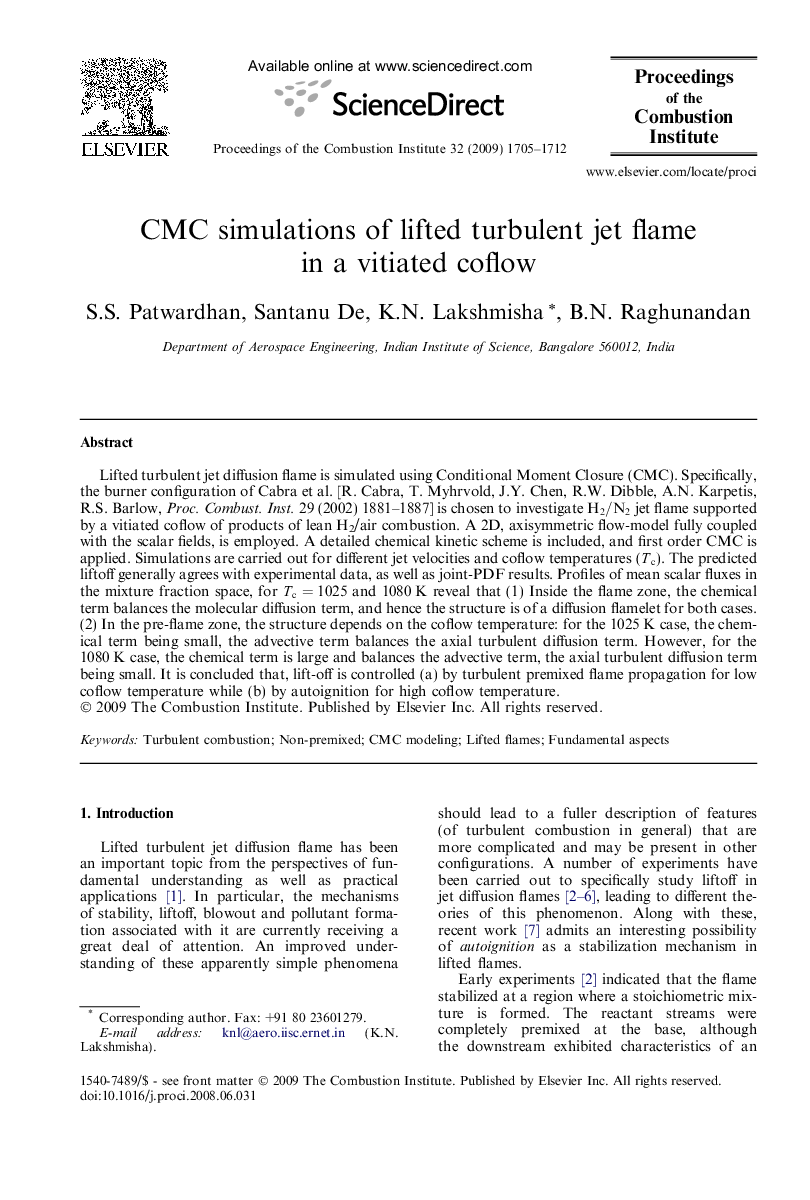| Article ID | Journal | Published Year | Pages | File Type |
|---|---|---|---|---|
| 241017 | Proceedings of the Combustion Institute | 2009 | 8 Pages |
Lifted turbulent jet diffusion flame is simulated using Conditional Moment Closure (CMC). Specifically, the burner configuration of Cabra et al. [R. Cabra, T. Myhrvold, J.Y. Chen, R.W. Dibble, A.N. Karpetis, R.S. Barlow, Proc. Combust. Inst. 29 (2002) 1881–1887] is chosen to investigate H2/N2H2/N2 jet flame supported by a vitiated coflow of products of lean H2/air combustion. A 2D, axisymmetric flow-model fully coupled with the scalar fields, is employed. A detailed chemical kinetic scheme is included, and first order CMC is applied. Simulations are carried out for different jet velocities and coflow temperatures (TcTc). The predicted liftoff generally agrees with experimental data, as well as joint-PDF results. Profiles of mean scalar fluxes in the mixture fraction space, for Tc=1025Tc=1025 and 1080 K reveal that (1) Inside the flame zone, the chemical term balances the molecular diffusion term, and hence the structure is of a diffusion flamelet for both cases. (2) In the pre-flame zone, the structure depends on the coflow temperature: for the 1025 K case, the chemical term being small, the advective term balances the axial turbulent diffusion term. However, for the 1080 K case, the chemical term is large and balances the advective term, the axial turbulent diffusion term being small. It is concluded that, lift-off is controlled (a) by turbulent premixed flame propagation for low coflow temperature while (b) by autoignition for high coflow temperature.
